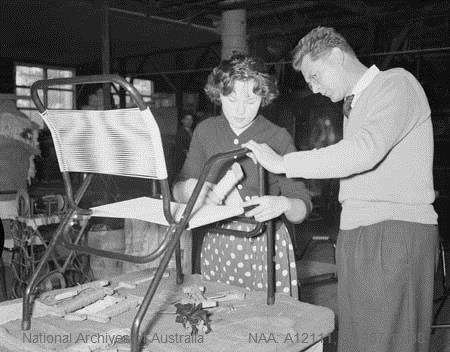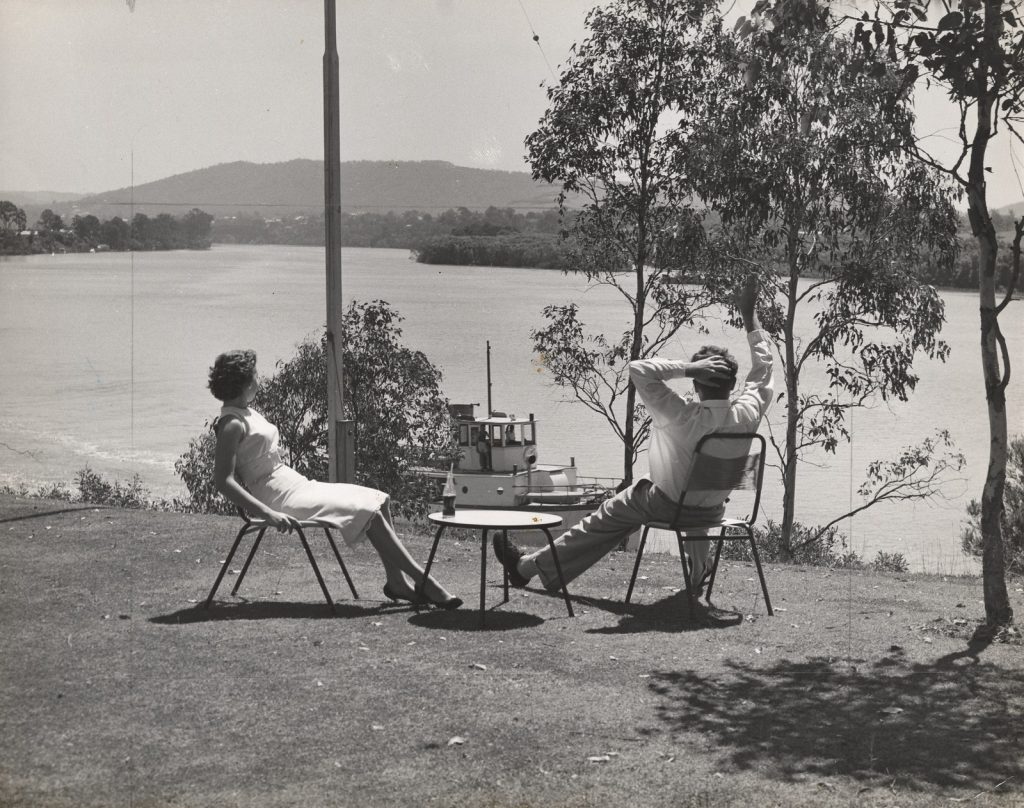A refugee migrant success story: Paul Lechner (1919-1989)- The electrical engineer who became a successful furniture manufacturer
Paul Lechner migrated to Australia from Hungary in 1949 sponsored by the International Refugee Association (I.R.O.) He was an electrical engineer with qualifications from universities in Budapest, Paris and Vienna. After arriving in Newcastle, he came to Brisbane, determined to do well in his new country. While working as a clerk at the Wacol Migrant Centre he obtained registration as an electrical fitter and mechanic. He then worked in his new trade for the Brisbane City Council and also did a night shift as a switch board attendant. By the end of his two-year contract with the Commonwealth Government he had saved £60 and was ready for a new challenge.
It was a picture in a magazine which was to change his life and set him on the path to success.
An image of a steel chair with what he called ‘nylon lashing’ caught his attention and gave him an idea for a business opportunity. That type of chair would be ideal for the Brisbane climate and was not available in Brisbane at the time. He decided to make similar chairs himself.
The local manufacturer he approached for the ‘nylon lashing’ didn’t have any, but loved the idea of the chairs and ordered 50.
Paul Lechner watches while one of his staff Mrs. Anne Kravchenko, a Ukrainian migrant, lashes nylon to a tubular steel Lechner chair at his Brisbane factory in 1957. (National Archives of Australia. ID: A12111)That was the beginning of a new career for Paul. He borrowed £300 from a bank, set up his company Paul Lechner Pty Ltd. and moved from his garage to a 1,000 sq ft building in Paddington. There he produced steel and nylon chairs and tables with plastic tops suitable for the casual Brisbane indoor/outdoor lifestyle. He paid back the bank loan within a year.

At one point he nearly lost everything but managed to save his business by pawning his rings and watches for £25. He then discounted his kitchen suites by 50% and soon business improved. From then on he went from strength to strength, making £6,000 in six months!

As his business expanded, he established factories in Vulture Street, Woolloongabba and Rocklea and equipped them with the latest machinery. Within six years he had a staff of 80 and distribution centres in Brisbane, Sydney and Melbourne.

His signature product was a range of outdoor furniture called Breeze. The steel frames were covered with flexible plastic tubing, with solid plastic string woven around the main frame to provide body support.

He won an Australia-wide competition for two £20,000 orders for tubular steel and fibreglass pieces for the new Chevron and Lennons Broadbeach luxury hotels on Queensland’s Gold Coast. He also made tubular steel furniture for Government contracts.

In 1958 he began to experiment with fibreglass reinforced plastic (FRP) to produce a variety of large, light, corrosion free vessels such as tanks and cattle troughs for the agriculture industry. A new company, Fontany Products Pty Ltd, was set up for this venture.
Paul Lechner continued to be active in his business interests until his death in 1989 from Motor Neuron Disease.
